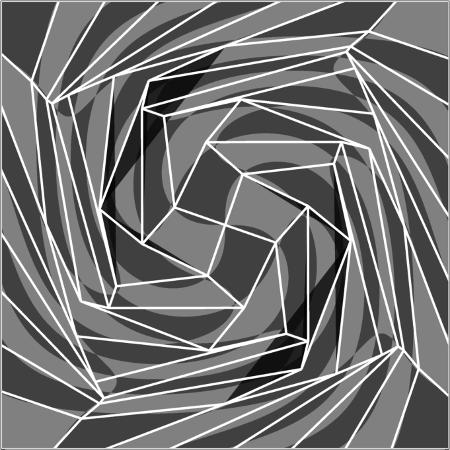Mesh motion is at the core of many numerical methods for time dependent flow and structure problems. Examples include Lagrangian hydrodynamics methods, in which the mesh evolves with time in order to track deformations of the problem domain, and the related Arbitrary Lagrangian-Eulerian methods, which incorporate a mesh rezoning step to mitigate excessive mesh deformations and mesh tangling. Another important example are semi-Lagrangian methods for advection problems, including schemes utilizing incremental remapping as a transport algorithm. These methods require computation of the mesh motion under a velocity field; most of them approximate the deformed Lagrangian mesh by solving numerically the kinematic relation to estimate the new cell vertex positions and connecting them by straight lines. Consequently, the cells in the deformed mesh incur two types of errors: one due to the approximation of the vertex trajectories and another due to the approximation of the deformed cell edges by straight lines. These temporal and spatial errors yield approximate Lagrangian cells whose volumes do not match the volumes of the exact Lagrangian cells and may compromise the accuracy of numerical methods relying on mesh motion.
A recent collaboration between researchers at Sandia National Laboratories and Los Alamos National Laboratories has led to the development of a new, optimization-based method for volume correction, which is applicable in multiple modeling and simulation contexts ranging from Lagrangian methods to mesh quality improvement. Their approach considers the problem of finding a mesh such that 1) it is the closest, with respect to a suitable metric, to a given source mesh having the same connectivity, and 2) the volumes of its cells match a set of prescribed positive values that are not necessarily equal to the cell volumes in the source mesh. This volume correction problem is then formulated as a constrained optimization problem in which the distance to the source mesh defines an optimization objective, while the prescribed cell volumes, mesh validity and/or cell convexity specify the constraint. The optimization problem is solved numerically by a sequential quadratic programming (SQP) algorithm whose performance scales with the mesh size. The scalable performance is achieved by developing a specialized multigrid-based preconditioner for optimality systems that arise in the application of the SQP method to the volume correction problem. Preliminary numerical studies demonstrate the accuracy and robustness of the new method.

